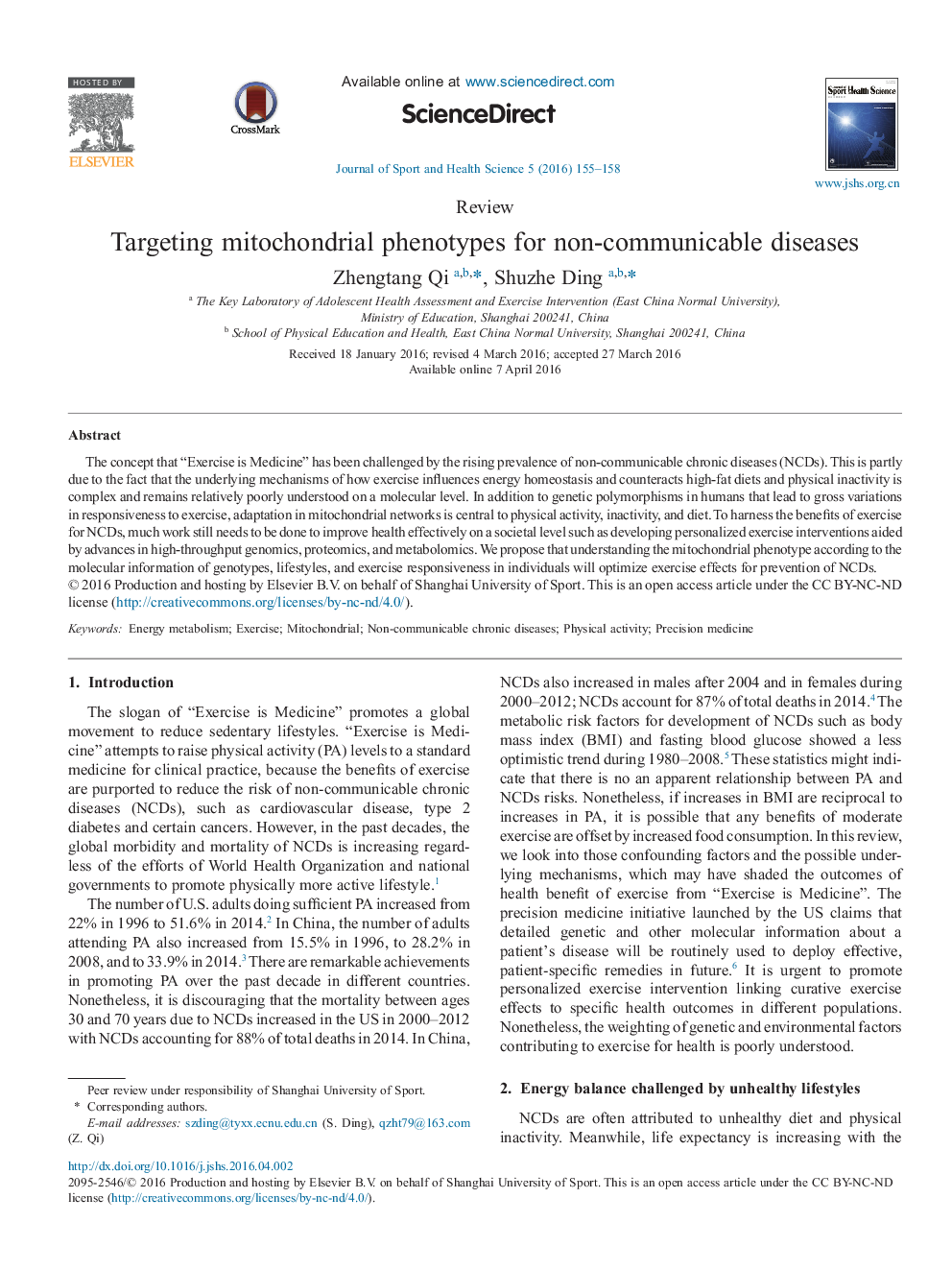| Article ID | Journal | Published Year | Pages | File Type |
|---|---|---|---|---|
| 1084031 | Journal of Sport and Health Science | 2016 | 4 Pages |
The concept that “Exercise is Medicine” has been challenged by the rising prevalence of non-communicable chronic diseases (NCDs). This is partly due to the fact that the underlying mechanisms of how exercise influences energy homeostasis and counteracts high-fat diets and physical inactivity is complex and remains relatively poorly understood on a molecular level. In addition to genetic polymorphisms in humans that lead to gross variations in responsiveness to exercise, adaptation in mitochondrial networks is central to physical activity, inactivity, and diet. To harness the benefits of exercise for NCDs, much work still needs to be done to improve health effectively on a societal level such as developing personalized exercise interventions aided by advances in high-throughput genomics, proteomics, and metabolomics. We propose that understanding the mitochondrial phenotype according to the molecular information of genotypes, lifestyles, and exercise responsiveness in individuals will optimize exercise effects for prevention of NCDs.
